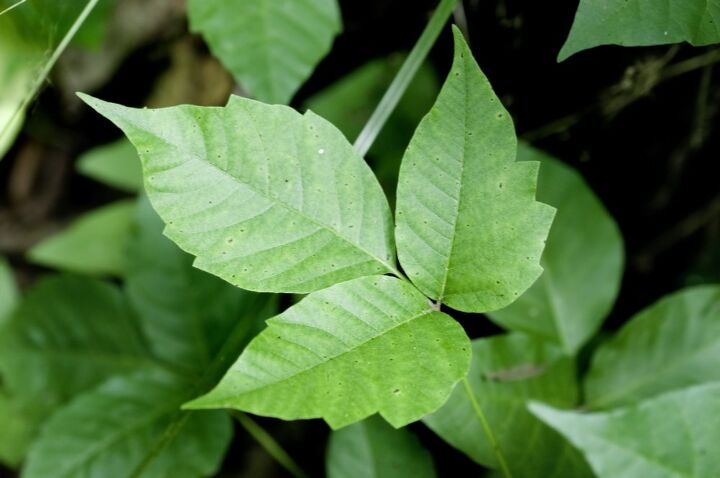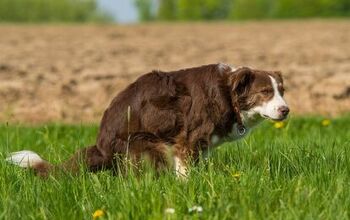All About Poison Ivy in Dogs

You probably know the saying, “Leaves of three, leave me be.” This is the saying people use to remember what poison ivy looks like. Unfortunately, even if your dog has heard this saying before, he doesn’t know what it means, and he certainly won’t heed its advice. But do dogs actually get poison ivy and, if they do, what can you do about it? Keep reading to find out.
Do Dogs Get Poison Ivy?
Poison ivy grows anywhere and everywhere, from wooded national parks to your own backyard. Known by the scientific name Toxicodendron radicans, poison ivy is a woody vine that produces a toxic resin known as urushiol. This resin is responsible for the raised, itchy rash that occurs when poison ivy comes into contact with your skin. You can identify poison ivy by its bright green color and three-leaf structure.
Related: Poisonous Plants For Dogs
Though some people don’t develop a reaction to poison ivy, those who do find it to be extremely unpleasant and the rash can spread easily. Don’t make the mistake of assuming that just because your dog has a fur coat that he is protected – dogs can get poison ivy rashes in areas where their fur is thin or on areas of exposed skin such as the stomach, inner legs, or external genitalia. When exposed to poison ivy, dogs can develop severe dermatitis which may cause them to bite, lick, scratch, or chew the area. This makes the rash worse, of course, and opens the dog up to a risk of spreading the infection to his mouth and throat.
How Do You Treat Poison Ivy in Dogs?
The first step in treating poison ivy in dogs is identifying the problem. If you don’t actually see your dog come into contact with the plant, you may not make the association when symptoms develop. Here are some of the signs and symptoms of poison ivy in dogs:
- Inflammation and swelling of the skin
- Development of red, raised bumps
- Severe itching of the skin
- Blisters that break and ooze clear fluid
- Sudden vomiting or diarrhea (if ingested)
If your dog starts to show any of these signs, it’s a good idea to take him to the vet before things get worse. If the reaction becomes very severe, your dog could go into anaphylactic shock and that is very dangerous. If your dog has ingested poison ivy, this risk is much higher and your dog may need medical treatment to prevent anaphylaxis.
Related: What are the Dangers of Water Hemlock to Dogs?
Treatment for poison ivy in dogs usually involves bathing the dog to remove any traces of the toxic resin from his skin and coat. If the dog has already developed a reaction, remedies like aloe vera and calamine lotion may help soothe the itching, though you need to make sure your dog doesn’t lick the treatments off. Rubbing alcohol can keep the affected area clean and it may cool things down, just don’t apply it to your dog’s face or genitals.
When your dog is enjoying time in the great outdoors, all he cares about is the fact that he’s outside. It’s your job as a dog owner to keep him safe, and that means protecting him against poison ivy. Put to use the information you’ve learned here for a poison-ivy free fall for you and your dog.

Kate Barrington is the loving owner of two cats (Bagel and Munchkin) and a noisy herd of guinea pigs. Having grown up with golden retrievers, Kate has a great deal of experience with dogs but labels herself a lover of all pets. Having received a Bachelor's degree in English, Kate has combined her love for pets and her passion for writing to create her own freelance writing business, specializing in the pet niche.
More by Kate Barrington























